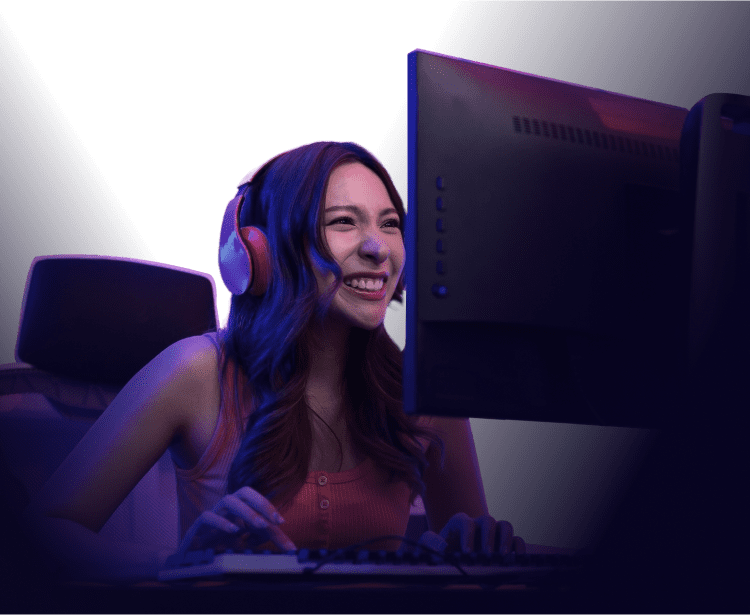What Is HRTF in Valorant And Should You Use it?
💡 HRTF Meaning in Valorant
- HRTF (Head-Related Transfer Function) in Valorant is an audio technology that simulates how sound interacts with the human head and ears, providing more accurate and immersive 3D audio cues to help players better locate sounds in the game environment.
Listen up, Valorant agents and audio aficionados! Today, we’re tuning into a feature that might just give you the edge in your next clutch situation: HRTF. No, it’s not a new agent ability or a secret weapon – it’s all about how you hear the game. Let’s dive into the world of 3D audio and discover why HRTF might be your new best friend in the heat of battle!
What Is HRTF in Valorant?
HRTF stands for Head-Related Transfer Function. It’s a fancy term for a technology that makes game audio more realistic and spatially accurate. In simple terms, HRTF simulates how sound waves interact with your head and ears in real life, giving you a more precise sense of where sounds are coming from in the game.
Think of it as giving your in-game ears a promotion. With HRTF, you’re not just hearing sounds; you’re experiencing them as if you were actually there in the game world. Footsteps, gunshots, and ability cues become more than just noise – they become valuable intel about your surroundings.
Why Valorant Players Use HRTF?
Valorant is a game where information is power, and sound is a crucial source of that information. Here’s why many players swear by HRTF:
- Better Directional Awareness: HRTF helps you pinpoint exactly where sounds are coming from, be it above, below, or behind you.
- Improved Depth Perception: It’s easier to gauge how far away a sound is, not just its direction.
- Competitive Edge: In a game where milliseconds matter, knowing precisely where an enemy is can be the difference between victory and defeat.
- Immersion: HRTF creates a more realistic and engaging audio experience, pulling you deeper into the game world.
- Reduced Audio Fatigue: With more natural sound processing, your brain doesn’t have to work as hard to interpret audio cues.
- Consistency Across Devices: HRTF can provide a more uniform audio experience regardless of your headphone quality.
- Vertical Sound Clarity: Particularly useful in Valorant’s multi-level maps, HRTF helps distinguish between sounds from different elevations.
How to Enable HRTF (step-by-step)
Ready to give your ears a Valorant upgrade? Here’s how to enable HRTF:
- Launch Valorant and go to the main menu.
- Click on the Settings gear icon in the top right corner.
- Navigate to the “Audio” tab in the settings menu.
- Scroll down to find the “HRTF” option.
- Toggle the switch to turn HRTF on.
- (Optional but recommended) Restart your game to ensure the changes take full effect.
- Jump into the Range or a custom game to test and get used to the new audio.
Tip:
Give yourself some time to adjust to HRTF. It might sound strange at first, but many players find it superior once they’ve adapted.
Other Related Terms
When exploring HRTF and audio in Valorant, you might encounter these related terms:
- Binaural Audio: A method of recording that uses two microphones to create a 3D stereo sound sensation.
- Surround Sound: A technique of audio reproduction that creates the impression of sound coming from various directions.
- Stereo: A method of sound reproduction that uses two audio channels.
- Audio Cues: Specific sounds in the game that provide information (e.g., footsteps, reloads).
- Sound Occlusion: How the game simulates sound being blocked or muffled by objects in the environment.
- Audio Mix: The overall balance of different sound elements in the game.
- Equalization (EQ): Adjusting the balance between frequency components in an audio signal.
- Soundstage: The perceived spatial distribution of sound sources in an audio recording.
- Directional Audio: Sound that appears to come from a specific location in space.
- Audio Positioning: The technique of placing sounds in a 3D space within a game.
- Dynamic Range: The ratio between the loudest and quietest sounds in the audio mix.
- Latency: The delay between an audio signal being generated and when you hear it, crucial in competitive gaming.
There you have it, audio enthusiasts and tactical sound trackers! You’re now tuned into the world of HRTF in Valorant. Remember, while crisp aim and quick reflexes are important, being able to precisely locate that lurking Cypher or rotating Omen can be just as crucial. HRTF might take some getting used to, but many players find it gives them that extra edge in tense situations. So, give it a try, train your ears, and who knows? Your next clutch play might just come courtesy of your newly enhanced audio awareness. Now get out there, listen closely, and may your sound cues be as clear as Sova’s recon bolts!





![Tabletop Gamers Crave More Play, But Life Keeps Getting in the Way [Infographic]](https://gametree.me/wp-content/uploads/2025/07/tabletop-infographic-thumb-statistics-300x126.png)









